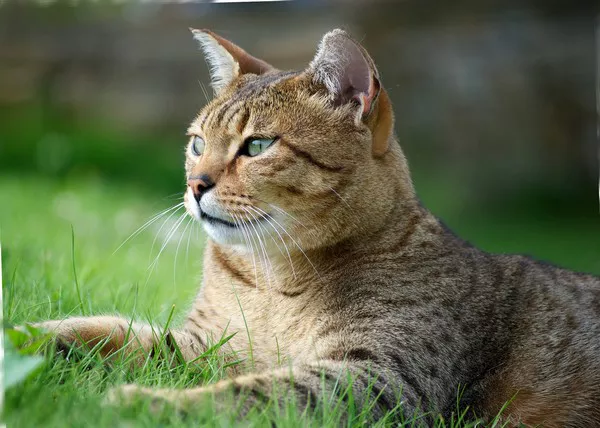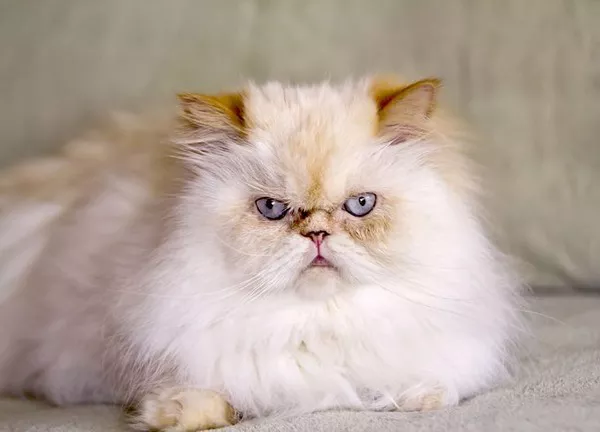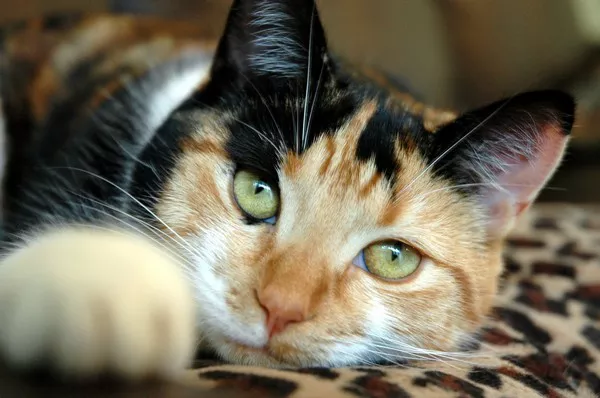Cats are known for their graceful and composed demeanor, but there are instances when you might observe your feline friend panting. While it’s relatively uncommon for cats to pant, it can be a cause for concern when it does occur. In this comprehensive article, we will explore the reasons behind why cats pant, the circumstances in which it may be normal, and when panting might signal an underlying health issue that requires attention.
Normal vs. Abnormal Panting:
Before delving into the reasons behind panting in cats, it’s essential to distinguish between normal and abnormal panting. Normal panting in cats is generally limited to specific situations and is usually brief. For example, after intense play or exercise, your cat might pant briefly as a way to cool down. This is considered normal and is not typically a cause for concern.
Abnormal panting, on the other hand, is characterized by prolonged, heavy, or labored breathing that occurs in situations where it is not expected, such as when your cat is at rest or after minimal activity. Abnormal panting can be a sign of an underlying health problem, and it should prompt immediate attention from a veterinarian.
Reasons Why Cats Pant:
Heat Regulation: Cats don’t have an efficient system for cooling down like humans. They primarily rely on panting to dissipate excess body heat when they become overheated. This is most commonly seen in hot weather or during vigorous play when their body temperature rises.
Stress or Anxiety: Panting can be a response to stress or anxiety. Cats may pant when exposed to stressful situations, such as a visit to the veterinarian or a new environment.
Pain or Discomfort: Cats may pant if they are in pain or experiencing discomfort. This can occur due to injuries, internal issues, or underlying medical conditions.
Respiratory Problems: Panting may be a sign of respiratory issues, such as asthma, bronchitis, or infections. These conditions can make it difficult for cats to breathe normally, leading to panting.
Cardiovascular Problems: Some heart conditions can cause cats to pant as the heart struggles to pump blood effectively. This may be more noticeable during physical activity.
Obesity: Overweight cats are more prone to panting, especially during physical exertion, as their bodies need to work harder to support their weight.
Allergic Reactions: Cats can experience allergic reactions to various substances, including pollen, dust, or certain foods. Panting may occur as part of the allergic response.
Excessive Grooming: Cats that groom themselves excessively may inadvertently swallow fur, leading to hairballs that can cause discomfort and panting.
Ingestion of Toxins: Panting can be a sign of poisoning if a cat has ingested a toxic substance. Other symptoms of poisoning, such as vomiting or diarrhea, may also be present.
When Panting Is Normal:
As mentioned earlier, there are situations in which panting can be considered normal for cats. These include:
Exercise or Play: Cats may pant after intense play sessions or vigorous exercise. This is their natural way of cooling down.
Hot Weather: Panting can help cats regulate their body temperature in hot weather. Providing a cool and shaded environment can help prevent overheating.
Stressful Events: Some cats may pant when they are exposed to new or stressful situations, such as car rides or visits to the veterinarian. This response is typically short-lived and subsides once the stressor is removed.
When Panting Is a Concern:
Panting that is abnormal or persistent should be taken seriously and evaluated by a veterinarian. Here are some signs that indicate panting may be a cause for concern:
Panting at Rest: If your cat is panting while at rest or after minimal activity, it may be indicative of an underlying health issue.
Labored Breathing: Heavy, labored breathing accompanied by visible effort or distress is a red flag and requires immediate attention.
Change in Behavior: If your cat’s panting is accompanied by changes in behavior, such as lethargy, loss of appetite, or hiding, it could be a sign of a significant problem.
Gum and Tongue Color: Check the color of your cat’s gums and tongue. If they appear pale, blue, or grayish, it could indicate a lack of oxygen in the blood and requires urgent veterinary care.
Coughing or Wheezing: Panting combined with coughing or wheezing may be a sign of respiratory issues.
Common Causes of Abnormal Panting in Cats:
Several underlying conditions and health problems can lead to abnormal panting in cats. These include:
Respiratory Infections: Infections of the upper or lower respiratory tract can cause panting, coughing, and labored breathing.
Asthma: Asthma is a common respiratory condition in cats that can lead to panting, wheezing, and coughing.
Heart Disease: Certain heart conditions, such as cardiomyopathy or heartworm disease, can result in panting due to inadequate blood circulation.
Heatstroke: Overheating, especially in hot and humid conditions, can lead to heatstroke in cats. Panting is a prominent symptom.
Trauma or Injuries: Physical injuries, including broken ribs or blunt force trauma, can cause pain and lead to panting.
Toxic Exposure: Ingestion or inhalation of toxic substances can result in panting, along with other symptoms of poisoning.
Obesity: Overweight cats may pant more frequently, especially during physical activity.
Diagnosing and Treating Abnormal Panting:
If your cat is exhibiting abnormal panting, it’s crucial to seek prompt veterinary care. The veterinarian will conduct a thorough physical examination and may recommend diagnostic tests, such as blood work, x-rays, or ultrasounds, to identify the underlying cause of the panting.
Treatment will depend on the diagnosis. It may include medications, lifestyle adjustments, or surgical procedures, depending on the specific condition. For example:
Respiratory Conditions: Medications, such as bronchodilators or corticosteroids, may be prescribed to manage respiratory conditions like asthma or bronchitis.
Heart Disease: Treatment for heart conditions may include medications to improve heart function and manage symptoms.
Heatstroke: Cats with heatstroke require immediate cooling measures and supportive care.
Injuries: Traumatic injuries may necessitate pain management, rest, and sometimes surgical intervention.
Toxicity: Treatment for poisoning includes decontamination, administration of antidotes, and supportive care.
Preventing Panting in Cats:
While some causes of panting in cats are unavoidable, there are steps you can take to reduce the risk and promote your cat’s overall well-being:
Regular Veterinary Check-Ups: Schedule routine check-ups with your veterinarian to catch any health issues early.
Maintain a Healthy Weight: Keep your cat at a healthy weight through a balanced diet and regular exercise to reduce the risk of obesity-related panting.
Provide a Cool Environment: Ensure that your cat has access to a cool and shaded environment during hot weather.
Reduce Stress: Minimize stressors for your cat, especially during visits to the veterinarian, by using calming techniques and familiar items, like their favorite blanket or toy.
Prevent Accidental Poisoning: Safeguard your home against toxic substances by storing chemicals, plants, and medications out of reach.
Conclusion:
Panting in cats can be a normal response to heat or exertion, but it can also be a sign of underlying health problems. Distinguishing between normal and abnormal panting is crucial for ensuring the well-being of your feline friend. If you ever notice your cat panting excessively or in unusual circumstances, consult with a veterinarian promptly to diagnose the underlying issue and implement appropriate treatment. Early intervention can make a significant difference in your cat’s health and quality of life.



























